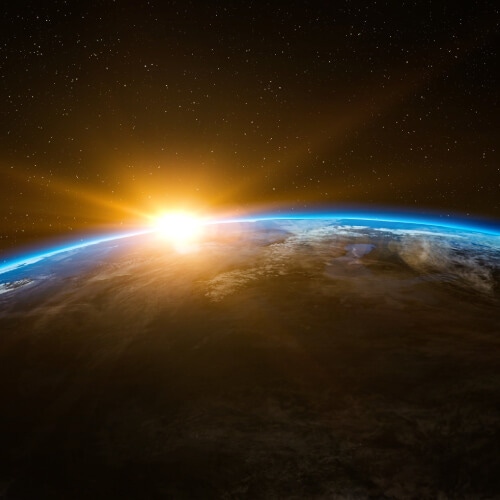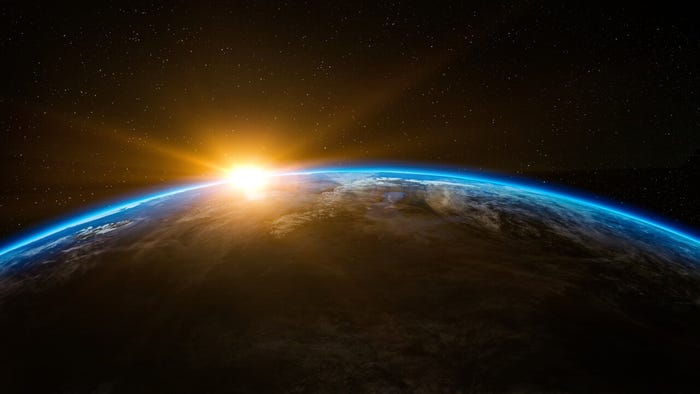After Starlink loses 40 satellites to a geomagnetic storm, news that a severe solar storm could crash the entire global subsea cable network.

The star at the center of our planetary system delivered a reminder of its power last week when it took out as many as 40 Starlink satellites.
The launch of 49 LEOsats last Thursday hit a geomagnetic storm that caused atmospheric drag to increase up to 50% higher than during previous launches, SpaceX said.
The satellites were switched into "safe-mode" but were unable to deploy in orbit, with up to 40 falling back into the Earth's atmosphere, the company advised.
Figure 1:  Event horizon: Are we just one solar storm away from losing subsea Internet cable networks - and with it the worldwide web?
Event horizon: Are we just one solar storm away from losing subsea Internet cable networks - and with it the worldwide web?
(Source: Arek Socha on Pixabay)
But the sun is not just a menace to the plans of earthly billionaires – some experts think it has the potential to take out the entire Internet.
It is not new that major solar events such as coronial mass ejections (CME) can produce geomagnetically induced currents (GIC) on the earth's surface that threaten terrestrial installations like the power grid and, in extreme cases, damage the electronics that power long haul fiber cables.
But researcher Sangeetha Abdu Jyothi from University of California Irvine argues in a recent SIGCOMM paper that the subsea cable industry underestimates the threat and is unprepared for it.
She said the potential for massive disruption is well understood among scientists, especially in relation to power grids.
Firey death: The last moments for Starlink's lost satellites captured over Puerto Rico by the Sociedad de Astronomia del Caribe.
"However, the networking community has largely overlooked this risk during the design of the network topology and geo-distributed systems such as DNS and data centers."
Jyothi says the emergence of the mass Internet in the last three decades has coincided with a period of weak solar activity.
The most recent short-term solar cycles, known as cycle 23 (1996-2008) and cycle 24 (2008-2020), "are part of an extended minimum in the current Gleissberg cycle," she said, referring to the longer solar cycle of around 80 to 100 years.
Catastrophic likelihood
The sun is expected to become more active in the near future and "the current Internet infrastructure has not been stress-tested by strong solar events," Jyothi cautions.
"Astrophysicists estimate the likelihood of a solar storm of sufficient strength to cause catastrophic disruption occurring within the next decade to be 1.6%-12%."
Jyothi said her team built models based on Internet topology datasets such as fiber cables, DNS root servers, IXPs and Internet routers.
They found subsea cables were more vulnerable than land-based cables because of their length.
A filament erupted this afternoon near region 2939. The eruption registered as a C3.1 flare.
— SpaceWeatherLive (@_SpaceWeather_) February 6, 2022
A coronal mass ejection was launched with an earth-directed trajectory. The CME is however faint and slow. An impact could occur on 10 Feb but we expect little geomagnetic activity. pic.twitter.com/3KYLK4UBUE
They also found Google data centers had greater resilience than Facebook's because they were more distributed. DNS root servers are less vulnerable since they are also highly geo-distributed.
The research models showed that the impact of a major CME event would vary from region to region.
"The US is highly susceptible to disconnection from Europe," Jyothi wrote.
"Europe is in a vulnerable location but is more resilient due to the presence of a larger number of shorter cables. Asia has relatively high resilience with Singapore acting as a hub with connections to several countries."
Subsea cable vendors did not respond to Light Reading questions.
Want to know more about security? Check out our dedicated security channel here on
Light Reading.
But in an article published shortly after Jyothi's paper the International Cable Protection Committee (ICPC) argued subsea cables today are designed to withstand large additional voltages and have experienced few documented instances of disruption from solar events.
It said a study of the impact of a 2017 on 12 submarine cables found that the impacts were negligible.
But it acknowledged that space weather was a growing area of research with "much still to discover about this complex phenomenon."
Related posts:
— Robert Clark, contributing editor, special to Light Reading
About the Author(s)
You May Also Like











